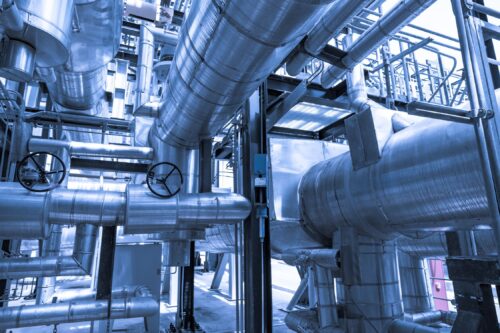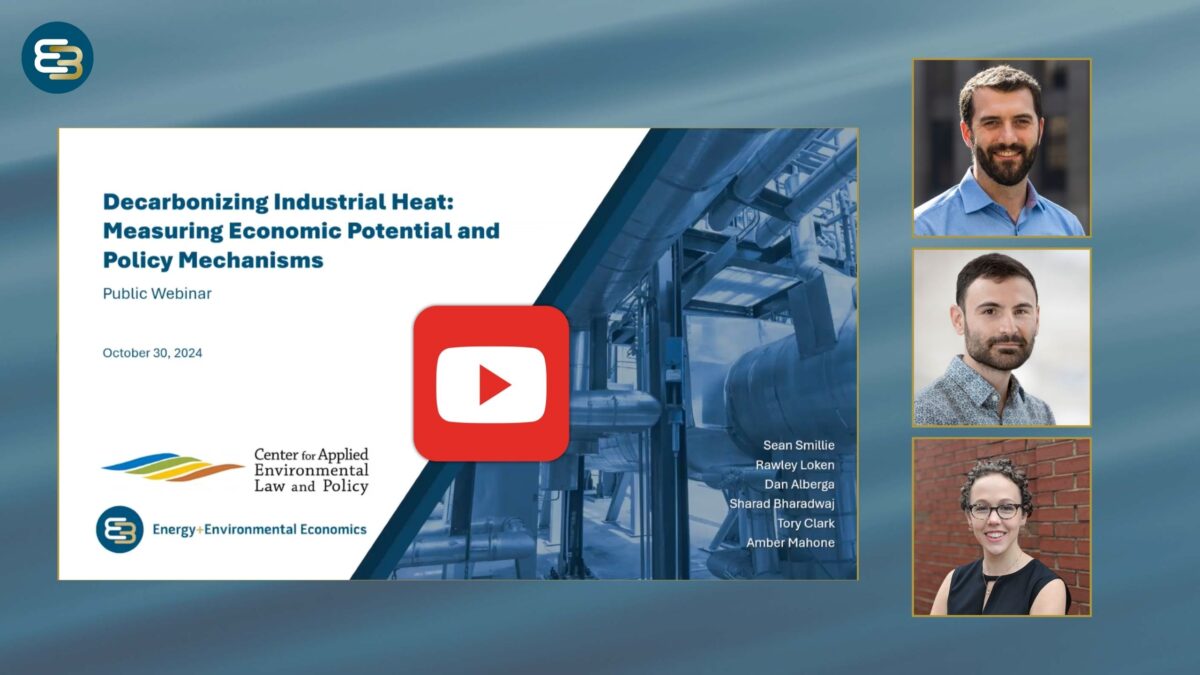
While the US has made progress in reducing economy-wide greenhouse gas emissions, the industrial sector continues to face significant challenges in its path to decarbonization. The varied nature of the industrial sector has made analyzing potential emission reductions more difficult than in other major sectors of the economy. Given the need to substantially decarbonize the economy within decades, however, it is pressing to identify the opportunities that do exist and how to overcome their barriers.
The Center for Applied Environmental Law and Policy (CAELP) sponsored an E3 study to advance this work. In its analysis, E3 calculated the economics of decarbonizing industrial indirect heat (heat provided by boilers and cogeneration equipment) in facilities across the US. The project team calculated the economics for heat pumps, electric resistance (with and without thermal energy storage), renewable natural gas, and hydrogen compared to natural gas. This study was unique in using self-reported facility data across hundreds of facilities to calculate costs, rather than generic assumptions used in previous studies. We find that industrial heat pumps are cost competitive with natural gas boilers at a small number of facilities, especially those that require low temperature heat, where the heat pumps can be run at high-capacity factors and in jurisdictions with low electricity prices. In fact, the abatement cost of decarbonization with heat pumps is below the social cost of carbon as used in recent EPA rulemakings, suggesting that policy support for industrial heat pumps could potentially be achieved at a lower cost than that of damages from climate change.

Fig. 1. Manufacturing Indirect Thermal Gas Demand Represents 20% of Industrial Natural Gas Demand, and 110 MMT of CO2 Annually
In addition, E3 performed a screening analysis of four types of policies which could help improve the economics of heat pumps across a wider number of facilities: low-cost loans, investment tax credits, carbon pricing, and production tax credits. Our analysis suggests that policy support that reduces upfront investment costs, like low-cost loans and investment tax credits, have limited potential to drive high heat pump adoption rates since capital cost is a small portion of the overall levelized cost of heat. Conversely, policies targeting operating costs, like carbon pricing and production tax credits, can drive much higher levels of adoption and have the potential to be transformative. These policies require careful implementation to ensure correct measurement and verification and avoid competitiveness concerns for emissions-intensive, trade-exposed industries. Successfully addressing these implementation considerations could enable cost competitive heat pump adoption and significant greenhouse gas reductions in the industrial sector.
Find the full E3 analysis in the report here. E3’s modeling tool, which can be used to test the impact of different policy levels, financial inputs and technical assumptions on cost-effectiveness and includes state-specific facility data, can be found here. To hear the E3 and CAELP project team discuss key findings, please find a recording of the live webinar below.

This webinar originally took place on October 30, 2024.
We expect this paper and accompanying model, dataset, and discussion to be helpful for regulators, utilities, industrial parties, and any other stakeholders with an interest in the economics of industrial sector decarbonization and the potential policy mechanisms to change those economics. Please reach out to sean.smillie@ethree.com and rawley.loken@ethree.com with any questions. To learn more about CAELP’s work, visit them here.


